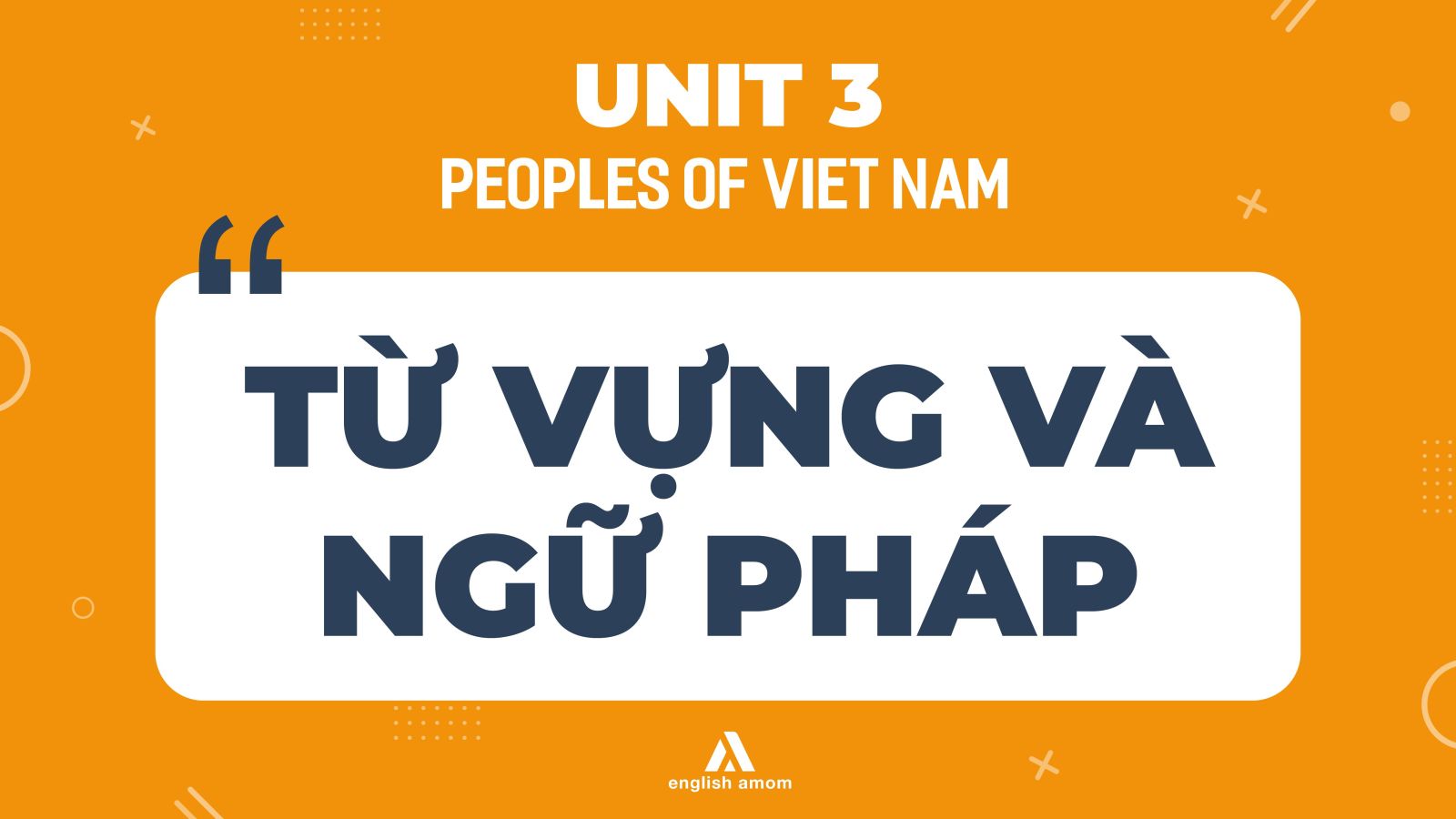
► Kênh hỏi đáp và giải thích thắc mắc kiến thức MIỄN PHÍ → truy cập LINK NHÓM: ENGLISH AMOM
► Kênh YOUTUBE hệ thống toàn bộ bài giảng CLIPS: truy cập LINK: ENGLISH AMOM CHANNEL
► Kênh TIKTOK: ENGLISH AMOM
1) Complete the sentences with the words and phrases in the box.
1. The Yao people use ideograms of Chinese origin to write their ....................
2. The Museum of Ethnology has a huge .................... of items of cultural importance from different ethnic groups in Viet Nam.
3. The Thai have their own language, and they also have their own ....................
4. If you are interested in ethnic minority culture, you should really go to one of the .................... in the northern mountainous regions.
5. The Viet people have many traditional ....................: weaving, carpentry, embroidery ... and their products are famous everywhere.
6. The schools in this region have done much to help children of .....................
7. Mua sap is a .................... dance of Muong people in the North West.
8. Five-coloured sticky rice is a....................in many parts of Viet Nam.
ĐÁP ÁN:
| 1. language | 2. collection |
| 3. writing system | 4. festivals |
| 5. crafts | 6. ethnic minorities |
| 7. typical | 8. speciality |
2) Insert a question word to complete each of the following questions.
1.................... of your parents will go to the meeting?
- My mother will.
2.................... colour is the Symbol of luck for the Hoa people?
- Red (is).
3.................... is a ‘long house’ of the Ede people?
- About 150 metres long.
4 .................... plays a more important role in a Giarai family?
- Women (do).
5 .................... is the Hoa Ban Festival of the Thai people held?
- In Lunar February.
6 .................... do the Odu people live?
- Mainly in Nghe An Province.
7 .................... is it from the centre to the Museum of Ethnology?
- 15 about seven kilometres.
8 ....................is this khan pieu (shawl)?
- Sorry, it's not for sale.
ĐÁP ÁN:
| 1. Which | 2. What |
| 3. How long | 4. Who |
| 5. When | 6. Where |
| 7. How far | 8. How much |
3) Fill each blank with ‘a’, ‘an’, or ‘the’ to complete the following passage.
Y Moan was the greatest pop singer of the Ede ethnic group in Dak Lak Province. He was born in 1957 and died in 2010. He was called ‘(1) ....................singer of the great woods’. He is famous for singing songs about (2) .................... Central Highlands and the ethnic people there. In addition, he made (3) ....................important contribution, through his singing and his own songs, to making the Central Highlands well-known to millions of people both inside and outside (4) ....................country. He not only sang but also composed songs about the Central Highlands. He received (5) .................... lot of prizes and awards for his achievements in music. In 2010 he was given the title ‘People's Artist’, (6).................... highest honour by the State for artists.
ĐÁP ÁN:
Y Moan was the greatest pop singer of the Ede ethnic group in Dak Lak Province. He was born in 1957 and died in 2010. He was called ‘the singer of the great woods’. He is famous for singing songs about the Central Highlands and the ethnic people there. In addition, he made an important contribution, through his singing and his own songs, to making the Central Highlands well-known to millions of people both inside and outside the country. He not only sang but also composed songs about the Central Highlands. He received a lot of prizes and awards for his achievements in music. In 2010 he was given the title ‘People's Artist’, the highest honour by the State for artists.

